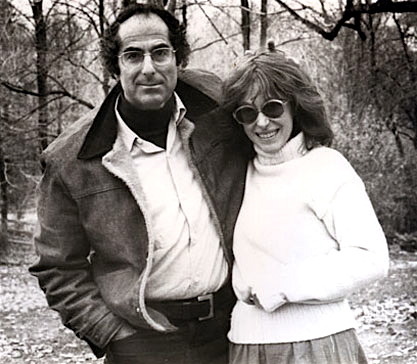The first in a series of writing exercises, so easy you can do it too and so crazy it just might work - all you need to do is take a book, any book, randomly choose three words from any place in the text, and write something quickly using those words as your guideline. Kind of a cross between improvisation, automatic writing, and just plain fucking around. The following was completed in about thirty-five minutes...
(carving - successful - exploit)
Jim Grunionne had made a name for himself, quite by accident, in the Port Winestain art community. One Thanksgiving, he had volunteered to do the honors at his then-wife's family's dinner table, carving up the Braun family's sixteen-pound Butterball knockoff. (They were never particularly wealthy, the Brauns, so they settled for a cheap Korean off-brand turkey each year, usually a Buttonball or a Butterbowl or something similar. The taste was usually more than adequate, especially to palates already dulled by steady infusions of São Paulo Girl and Heiniekin, but Jim always made a point to avoid their cranberry sauce and never looked too closely at the raisins in the stuffing.)
With an offhanded flourish, Jim took up the carving knife and the long metal thingie he could never remember the name of and set to work with a curious intensity that took the family, most of whom looked upon his career as a flask inspector for a minor drinking vessel concern as "lazy man's work," by surprise. Most of the Braun males were given to the kind of daily labors that result in broad, muscular shoulders, impressive pectorals and several missing fingers on at least one hand per person (which is why Jim was the best man for the turkey-carving gig by default). He pinioned himself over the turkey and slid the knife into its flesh, intuitively making incisions that even the rather creatively stunted Brauns recognized as both surgical and artistic.
Three minutes of lip-bitten, knit-browed labor later, he was done. And the family, famished though they were, could only sit in silent, slack-jawed wonder at the results. No one said much - compliments were at an unaffordable premium in this household - but their stunned glances at one another told the tale: it was beautiful. So much so, in fact, that no one dared take a single slice of Korean turkette meat, lest they sully the purity and artistry of what Jim Grunionne had achieved. He was the Mozart of meat cutting, that much was clear. And any salivation that went on around the table that holiday afternoon indicated a much different variety of hunger.
Within the hour, Gary Braun, the second-oldest son in the clan, snuck off to the guest bedroom and made a few preliminary calls on his oversized, eighties-vintage cell phone (after struggling manfully to remove it from the holster attached to his belt with the seven fingers remaining at his disposal). One of his few friends at Whittaker Chambers Junior College was the step-cousin-in-law of Whitey O'Fay, a talent agent renowned throughout the Moncheche County region as "the man with the golden fingertips." Blind since birth, owing to an unfortunately-timed prank in the delivery room, he used his remaining senses to intuit what made for great, impressive, salable entertainment, mostly by kneading the chins of the artists in question. As the area's closest approximation of a superagent, he built up a stable of what one could safely call "singular" talent. Chad Voogis, the Tantric Barista. Enervated Paul and the Narcoleptettes, a band much in demand at the many depressed-persons' cotillions around town. D'Artangello Platt, the Human Snifter. A rogue's storefront gallery of the finest (and usually only) in their respective fields - ear-hairdressers, car taunters, part-time cats, all part of O'Fay's somewhat unstable stable. And Gary Braun had just the right act to add to it right under his parents' roof. This was the opportunity of a lifetime of the week.
Unfortunately, Gary had the twin tendencies of getting a) somewhat overexcited and b) drunk, so the contents of the phone calls he made that night were along the highly-slurred lines of "HEY! CUTTING GUY OVER HERE! BIG KNIFE STAR! TURKEY ART!" None of which was adequate to bring across the genius in his midst. And the next morning, nothing of the evening remained apart from a truly remarkable hangover (enhanced by his own claim to artistic brilliance, the ability to play the drum break from "In-a-Gadda-da-Vida" on his neurocranium with his cell phone, which he demonstrated for ninety minutes straight while still in the bedroom, much to the delight and amazement of the family cat). As a consequence, the Mozart of meat-cutting remained uncelebrated and unremunerated in his lifetime. Nonetheless, Jim Grunnione would make his mark in the Port Winestain art community, when he accidentally sliced off his left hand at the "Scimitars and Soap" exhibition at the Repository Gallery eleven months later. This, of course, put a major crimp in his talent, but the story has a happy ending: the proprietor was so impressed by the hand's position on the gallery floor that he offered Grunnione thirty-five dollars to keep it there, cash sufficient to ensure that the Brauns didn't have to purchase an Korean off-brand turkey the following year. They had just enough for a Belgian one.



